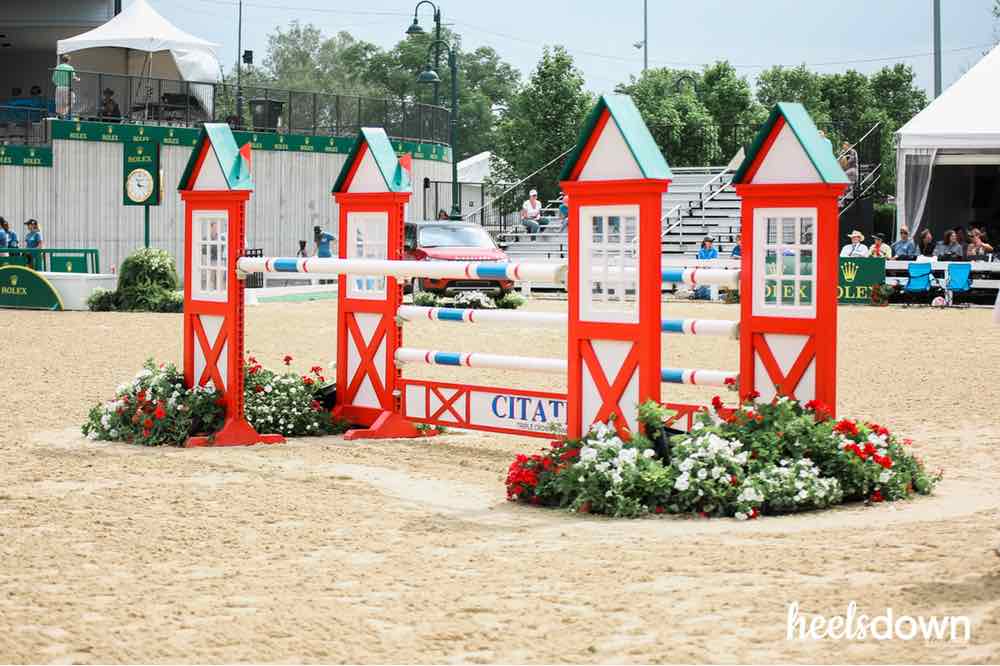Leslie Law: Warm Up for Stadium Jumping in Seven Jumps

Olympic gold medalist and coach Leslie Law stresses the importance of a short but effective warm-up for show jumping when it falls on the final day of a three-day event.
The Challenge of a Tired Horse
“Very often when you warm up [for stadium jumping the day after cross-country] you have a totally different horse than the one you’re used to jumping. Usually they’re quick and powerful off the floor, but [the day after cross-country] they just want to get up and down as easily as possible.
So, on the last day of a three-day in the stadium, the riders have to use a lot more skill. They have to be very good about how much leg they use and how they balance that with their bodies. Too much leg, you can push a horse through the jump. Not enough, they’re weak off the floor. If you move your upper body too quick, you flatten the jump. You’re always trying to get the horse to jump up into you. It’s a lot of mental work going into this.”

Loosen the Shoulders
“We start off small and build up quickly because the horses are a little bit tired. I always think you’ve got to be careful you don’t leave the jump in the warm up.
A lot of the loosening up should be done in about 15 minutes of flatwork – getting the horse to leg yield a bit, doing some shoulder in, so that they start to get looser in their shoulders and start to engage the hind end. With the event horses, a lot of the time it’s about getting the shoulders loosened up after [cross-country the day before].
Then when you start jumping, we normally start off with a small oxer, and then we get that oxer up and quite wide so that the horses have to pick their shoulders up and hold them up. They don’t want to do that. The wide oxer starts to produce the right shape and gets them to hold their shoulders up and loosen them.”
Seven Jumps to Game Time
“For me, I try to [warm up for stadium jumping] with as few of jumps as possible. Very often the jumps become more for the rider than the horse, so the experienced riders have the advantage of confidence. They can go in on seven jumps. But the less experienced riders, they want another one. Then another one. That’s our job as coaches to say, ‘You’re in.’
Typically, we start with a small oxer, then make it wide, then make it a slightly ascending oxer, then we make it wide and square, then usually a vertical or two, and then in you go. Some horses need to go back to an oxer right before they go in to get them back up in the air and crossing the width again. In the ideal world, when I’m doing a three-day, I want to get it done with seven jumps. You have to leave enough in the tank.”


